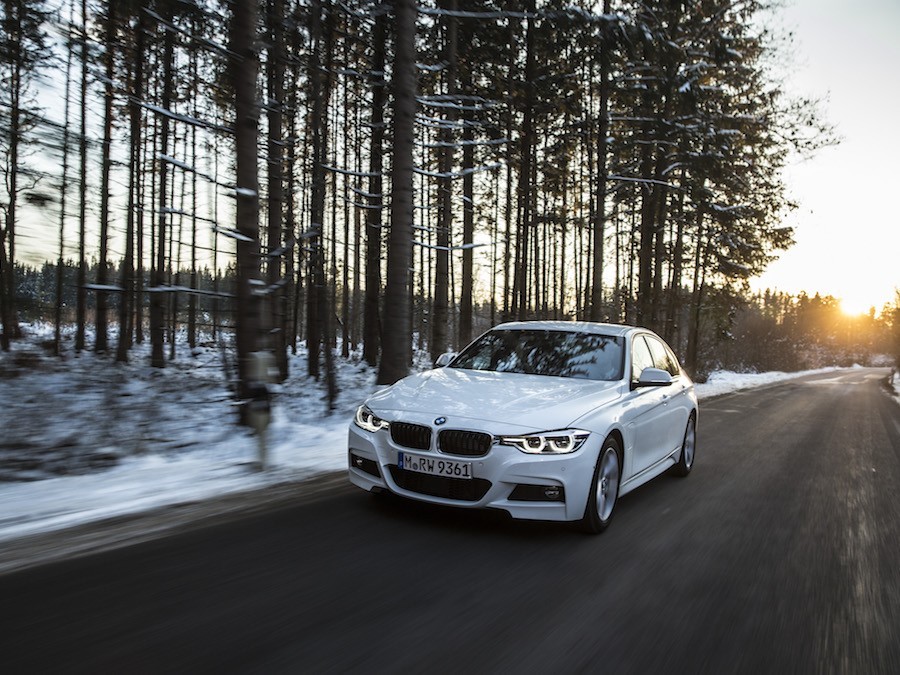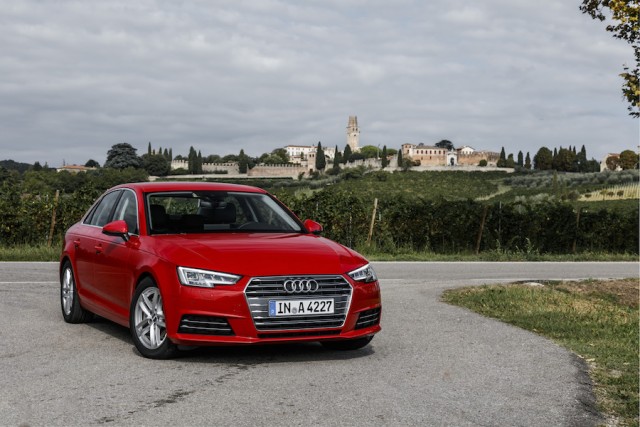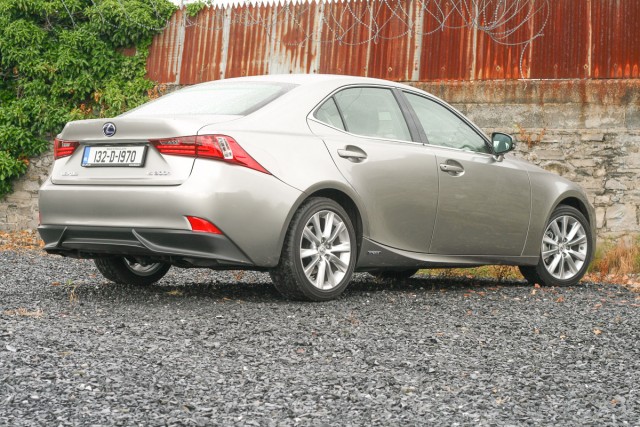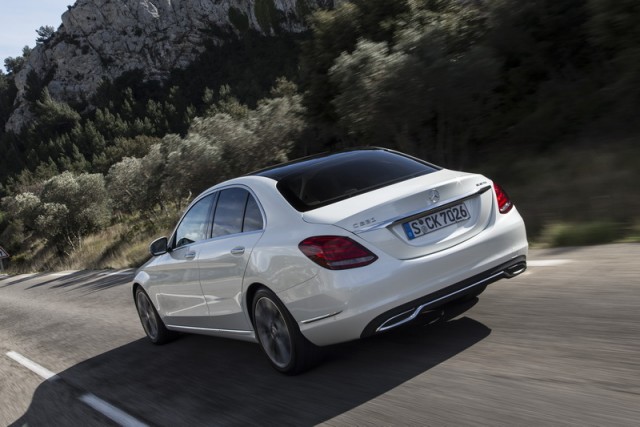BMW offers up the power of a 330i - now a four-cylinder turbo, remember - with almost as much torque as a 340i, along with running costs that are, on paper, twice as good as any 3 Series diesel in the brand new 330e plug-in hybrid electric vehicle (PHEV). The impressively intelligent drivetrain is faultlessly integrated into the 3 Series' body and it proves to be a very likeable PHEV, especially as it returned excellent real-world economy figures during our test drive. Could it tempt diesel drivers away?
In the metal
It's a BMW 3 Series saloon. Seriously, if you don't know what the sixth-generation 'F30' car looks like by now, can we politely ask you where on Earth you've been hiding for the past four years? For everyone else (aka, you normal people), there is very, very little to differentiate this petrol-electric plug-in hybrid from its more conventionally powered siblings and your task will be made even harder if 3 Series PHEV owners go for the full de-badging option, as that will remove the 'eDrive' icons on the C-pillars and the boot-mounted '330e' moniker, which are the easiest identifiers. Without those, you're looking for the electric charging point, which looks like a fuel filler flap, on the nearside front wing.
Other than that, it's standard 3 Series fare, which means it's handsome and inoffensive enough on the outside, and bloody magnificent on the inside. The hybrid gets some cool extra electricity-related displays in both its instrument cluster and the main iDrive display screen, a wealth of blue stitching and - in our test car, at least - some mesh-effect cloth trim. But apart from those features and the three-mode eDrive control button near the gear lever, this is familiar stuff. Plenty of room for four, maybe five adults within, too.
The 330e's boot is a sizeable 370 litres and it has a level floor plus a neat little recess on the left-hand side in which you can store your neatly bagged-up charging cable when it's not in use, while 'Through-Load' with 40:20:40 split rear seats is offered as standard on the 330i. However, the cognoscenti among you will notice that adding the electric drive has whipped fully 110 litres out of the cargo capacity of a regular 3 Series saloon. That's a lot.
Driving it
Right, let's grasp this one by the electric horns, eh? Take a look at the 330e's gobsmacking on-paper economy returns and CO2 emissions. And then understand this: if you live in the city and only ever commute say 30 kilometres a day, with adequate access to charging points either at home, work or both, you might even do better than the almost-incredible 1.9 litres/100km (148.7mpg) and 44g/km emissions numbers of a 330e on its smallest wheels; on the other hand, if this scenario doesn't apply to you and you regularly use the 2.0-litre petrol engine, then you haven't got a hope in hell of matching even half of that.
So what can you realistically expect? Well, the clever energy management system of the rear-wheel drive 330e seems to eke its electric reserves out far better than the heavier, slightly more powerful BMW X5 xDrive40e did when we drove that last year. On a largely flat 78km journey through Munich's lightly congested suburbs and surrounding countryside, in seven degrees Centigrade conditions and at an average speed of 55.4km/h, we saw the following: fuel consumption was 4.5 litres/100km (62.8mpg); battery usage totalled 7.0kWh per 100km; and we had eight per cent of the battery's juice remaining.
For us, leaving aside the near-150mpg number, those are some damned respectable figures for a premium-feeling petrol saloon capable of 0-100km/h in 6.1 seconds. No 3 Series diesel is realistically going to match such returns and the 330e is miles ahead of the TwinPower Turbo petrol Threes, so maybe the PHEV's outlay is worth it. Just like other BMW hybrids, aside from the Eco-Pro, Comfort, Sport and Sport+ selectable drive modes, pressing the eDrive button cycles between Auto eDrive (the car shuffles between its power sources accordingly), Max eDrive (full EV running, if the battery currently has the charge to do so) and Save (which favours the petrol engine to retain battery charge for later usage).
And, talking of that battery, it has a total capacity of 7.6kWh, with 5.7kWh usable, meaning it'll take three hours to fully charge on a regular mains socket, or two hours 12 minutes on BMW's high-speed iWallbox, part of the 360o Electric package offered on the 330e. You can cover up to 40 kilometres on electric power alone, with top speed limited to 120km/h as a result.
With all that in mind, you're probably wondering about the rest of the driving experience. It's hugely refined, thanks to a decent ride and the utterly seamless way the drivetrain switches between electric-only, hybrid and petrol running. The eight-speed automatic is an absolute peach, the body control is strong and - when not afflicted by the optional variable assistance - the steering is excellent. Also, the BMW's pace is never in doubt, as despite its relatively lardy 1,665kg kerb weight, the 330e feels decently rapid when just whirring away from traffic lights in electric mode and really quick with both motors lit up and driving the back wheels.
However, this 330e is not quite as exciting as you might reasonably expect of a 252hp rear-wheel drive BMW when it comes to handling, where it is assured but not massively involving. That 2.0 turbocharged four never sounds particularly nice, even under heavy throttle loads. And the ride might suffer here in Ireland, where we're more likely to fit bigger wheels than the 17s on winter tyres our Munich test car was wearing (larger alloys also affect the 330e's economy/emissions, but not by very much) and also because our roads are simply not up to German standards. Other than those minor concerns, though, the 330e is a very sweet, nicely sorted machine that will satisfy 99.9 per cent of the people who buy it; surely, then, job done for BMW.
What you get for your money
BMW has eschewed the '40e' badging it used on the 313hp/450Nm X5 PHEV and the forthcoming 740e, which use similar, if more powerful hardware than this 3 Series, mainly because Munich considers this an alternative to the 330i, which, lest we forget, is no longer powered by a straight-six, but a turbocharged four (sob!). So 330e, and not 340e, it is. By that rationale, and the fact the BMW chiefs launching the 330e said (and we quote): "The prices of our PHEV models are similar to the conventional alternatives, there is no significant premium to pay", then you'd expect the 330e to rock in somewhere around the €51,090 you'll need for an entry-spec 330i in Ireland. The e's toy count should broadly match that of the i, as well. However, thanks to the VRT relief of €2,500 and a €5,000 SEAI grant, the 330e starts at €41,030 on-the-road here, which is less than 316d SE money... The 330e powertrain can be paired with SE, Sport, Luxury and M Sport specifications as well.
Summary
Only city dwellers are ever going to see the very best green data from BMW's new 330e, but the BMW i8 notwithstanding, this is easily the most convincing PHEV that Munich has yet released. Like any current 3 Series, the dynamic sharpness that was once synonymous with the brand has become a little fuzzy in recent years, but the pay-off for that is a hike in refinement - and nowhere is this more evident than when the 330e is silently whisking you around town in zero-emissions, full EV comfort. It's a highly impressive marriage of BMW's best-selling compact executive saloon and hybrid technology, and for that it should be applauded. On top of all that, thanks to generous grants, the 330e is comparable to the 316d in terms of pricing. Tempted?









































